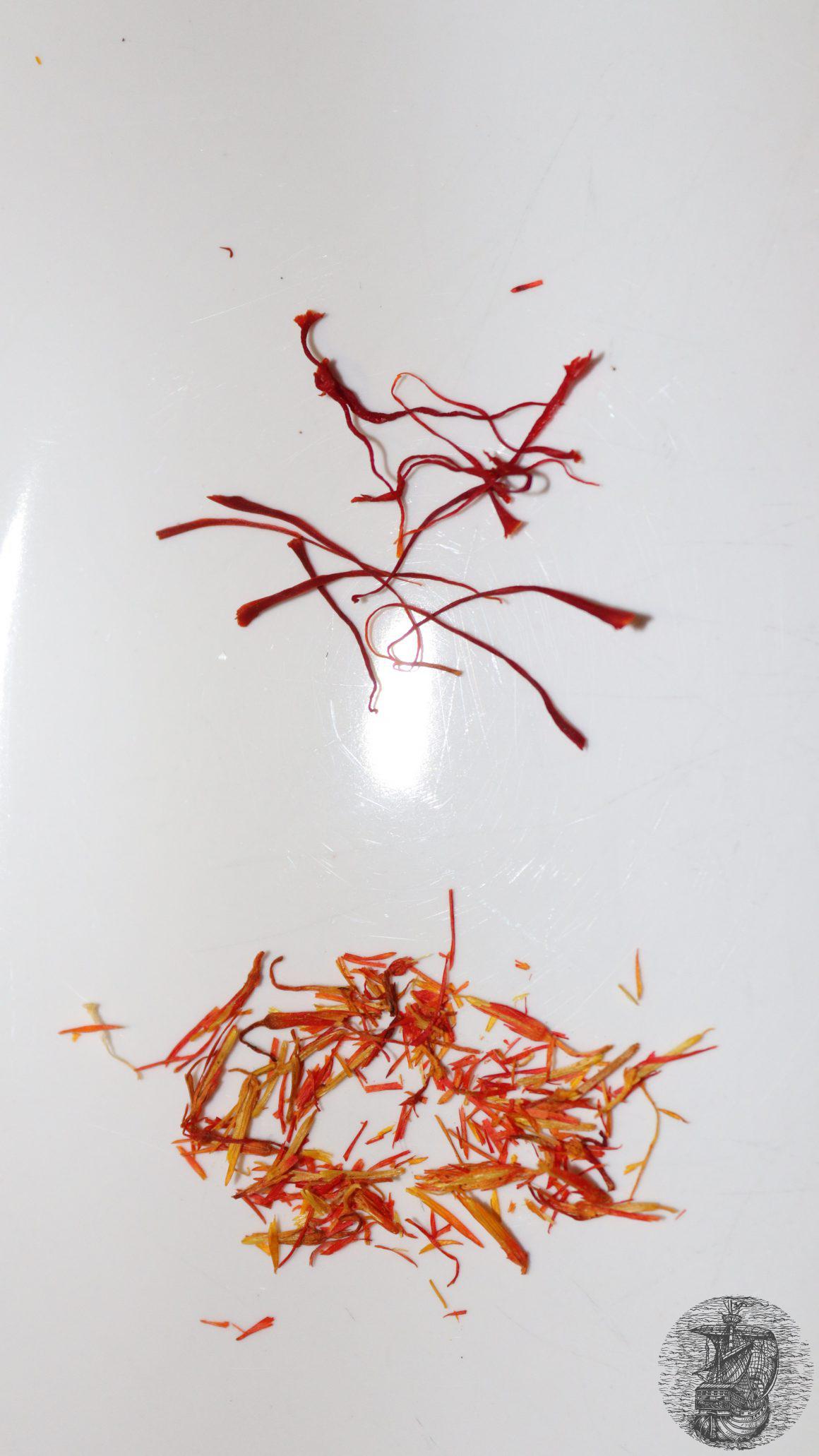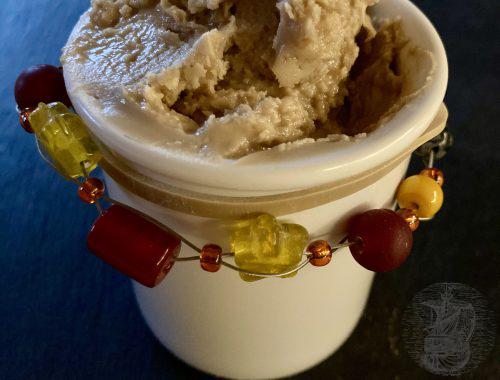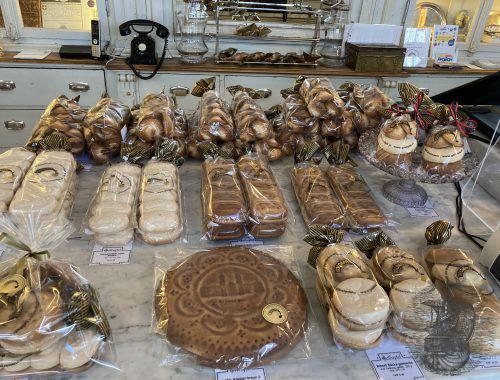
Saffron threads – the precious spice
Saffron has always fascinated me. I have visited many spice markets before, like in Morocco, and in Mund, I visited the plantation. Then, last Summer, Samantha told me about her own saffron plantation. I learned a lot from her, especially about the life cycle of this plant.
Where does saffron come from?
Saffron is extracted from the “Crocus sativus“. This is a plant that originates from the Mediterranean region. Nowadays saffron threads are mainly produced in Iran, Morocco and India. Saffron is also cultivated in Europe, for example in Spain, France and Italy. And then there is a small production in Switzerland, in Mund (Valais). And of course, there is Samantha’s small plantation in Ticino.
What is saffron?
Saffron is made from the three red threads of the saffron flowers. You can find it as powder or as whole threads. As powder, it gives a stronger colour, while the whole threads need some preparation, but they are nice and decorative.
To obtain one kilo of dry saffron, you need five kilos of fresh threads, which corresponds to about 150’000 flowers. The threads are plucked from the flowers by hand. No mechanical aid has yet been invented for this.
Saffron has been used as a spice for a very long time and even today it is often found as an ingredient in traditional dishes.
For example bouillabaisse, paella and risotto Milanese are seasoned with it. It is also used in sweets.
In the German-speaking area, everybody knows the saying “Saffron makes the cake yellow”.
I even found it pickled in honey.
What is very interesting is that saffron itself is red as threads or powder and only turns yellow when it comes into contact with a liquid.
Saffron has always been a very expensive spice.
During certain times it was even more expensive than gold. With so much handwork, the price is not surprising. Even today it is still the most expensive spice. Fortunately, you only need a small amount to give a dish a good taste. For a risotto for four people about 0.25 g is enough.
Compared to other spices, saffron is expensive in all countries. And precisely because it is so expensive, it is often “stretched”. There is no limit to imagination. Thistle blossoms or corn beard are dyed red to imitate whole threads, and the powder sometimes contains dye or paprika. And then there are places where turmeric is simply sold as saffron (e.g. Moroccan saffron). But turmeric is yellow and is therefore easy to distinguish from saffron.
It is definitely worth buying saffron from a trusted seller.
How can I recognise real saffron?
Real saffron threads are thin and slightly thickened at one end. They are evenly red but can be slightly orange or yellowish at the ends. When they get wet they give off a yellow colour, but the threads themselves remain red. Their smell is typical and so is their taste.
Saffron powder is much more difficult to judge. The best way to recognize false powder is by the colour it gives off. Real saffron powder dyes yellow and not red or orange.

False saffron threads on the left
And then there is the price. If saffron is sold as cheaply as the other spices, you can almost be sure that it is not real saffron.
How do I use saffron threads?
Saffron threads need some preparation before they can be added to a dish. Either you soak them in some lukewarm water for about half an hour and then add them to the dish, or you can easily crush them with a small mortar and then add them.

False saffron threads on the left
Because of its delicate taste, saffron is usually added at the end of the cooking time.
Next week you will find a recipe for a wonderful saffron cream sauce!




